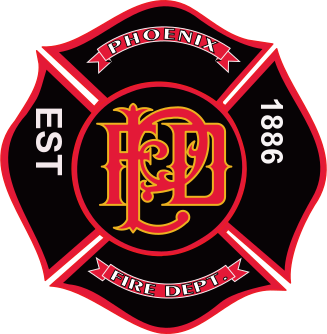Phoenix launches a Citywide food drive to assist residents experiencing food insecurity during the holidays.

Overview
The Phoenix Fire Department is committed to providing the highest level of customer service and resources to our community and members. We save lives and protect property through fire suppression, emergency medical and transportation services, all-hazards incident management, and community risk reduction efforts.
As an innovative and data-driven leader in the International Fire Service, the Phoenix Fire Department will continue to evolve with the modern world. We remain committed to delivering customer service excellence to our communities through pride and professionalism. We will honor our diversity and inclusion while striving to improve the well-being of our Fire Department family, respecting our past while planning for the future.
-

Join the Phoenix Fire Department
Find out how to join our team of PFD fire fighters to Prevent Harm, Survive and Be Nice!
-

Wildfire Safety
Important wildfire safety information and resources to help keep you safe.
-

Water Safety
Important water safety information and resources to keep you and your loved ones safe around water.
-

Community Outreach
Information on our bicycle helmet program, immunization and vaccination programs and more!
-

Fire Prevention
We provide vital life safety services through code enforcement, new business development inspections, general fire inspections and more.
-

Lockbox Program
The City of Phoenix Lockbox Program allows firefighters to gain entry to your home in case of emergency without causing any damage to your residence.
-

Phoenix Fire Department Data
Find data, reports, and key statistics about the Phoenix Fire Department's work.
-

Policies and Procedures
Access to Department Policies, Standard Operating Procedures, Professional Standards Guide, Emergency Access protocol and more.
-

Volunteer
Find out how to volunteer in our Cadet Program, Community Assistance Program or CERT (Community Emergency Response Team).
-

Fire Department Media
Through proactive media relations and innovative communication strategies, our Public Affairs team strengthens the connection with the people we serve
-

Office of Emergency Management
We work to advocate for emergency preparedness, prevention, response, recovery, and mitigation.

Contact the Fire Department
Administration Offices
150 S. 12th St.
Phoenix, AZ 85034
Phone: 602-262-6297
8 a.m. – 5 p.m.
Fire Prevention: 8 a.m. – 4 p.m.
Emergencies: 9-1-1



